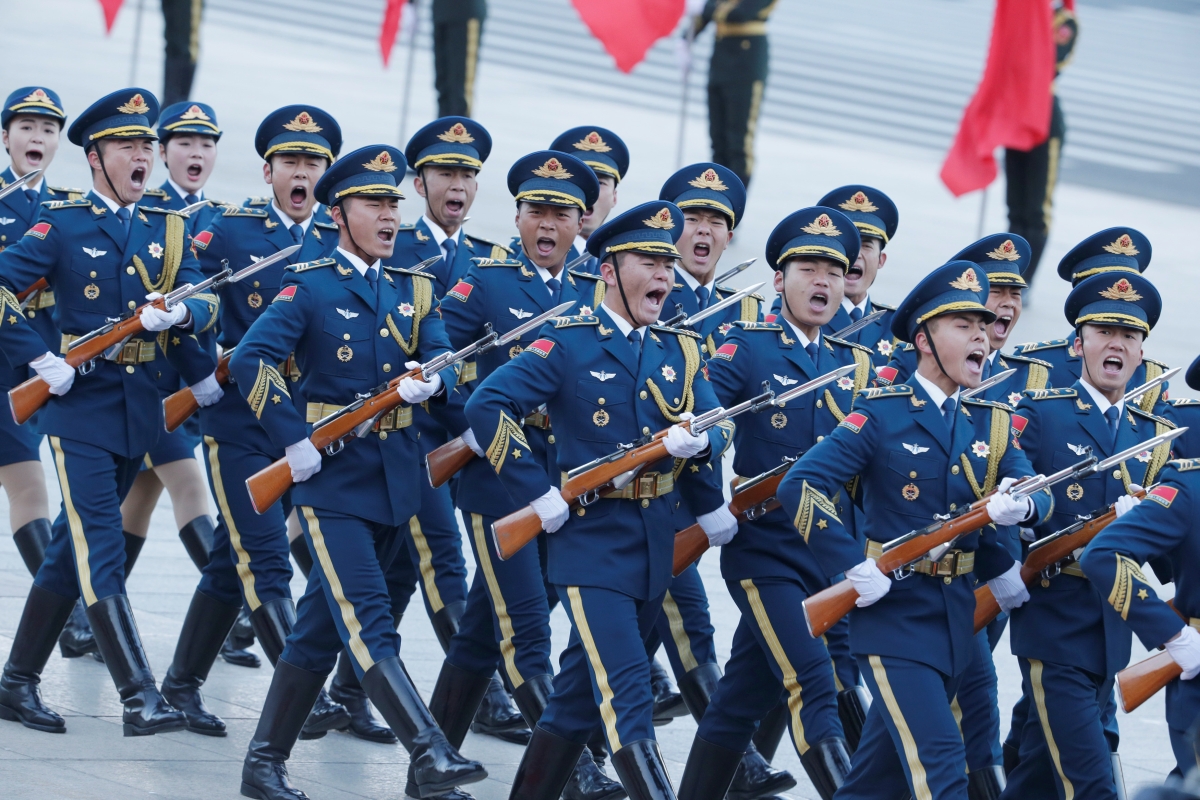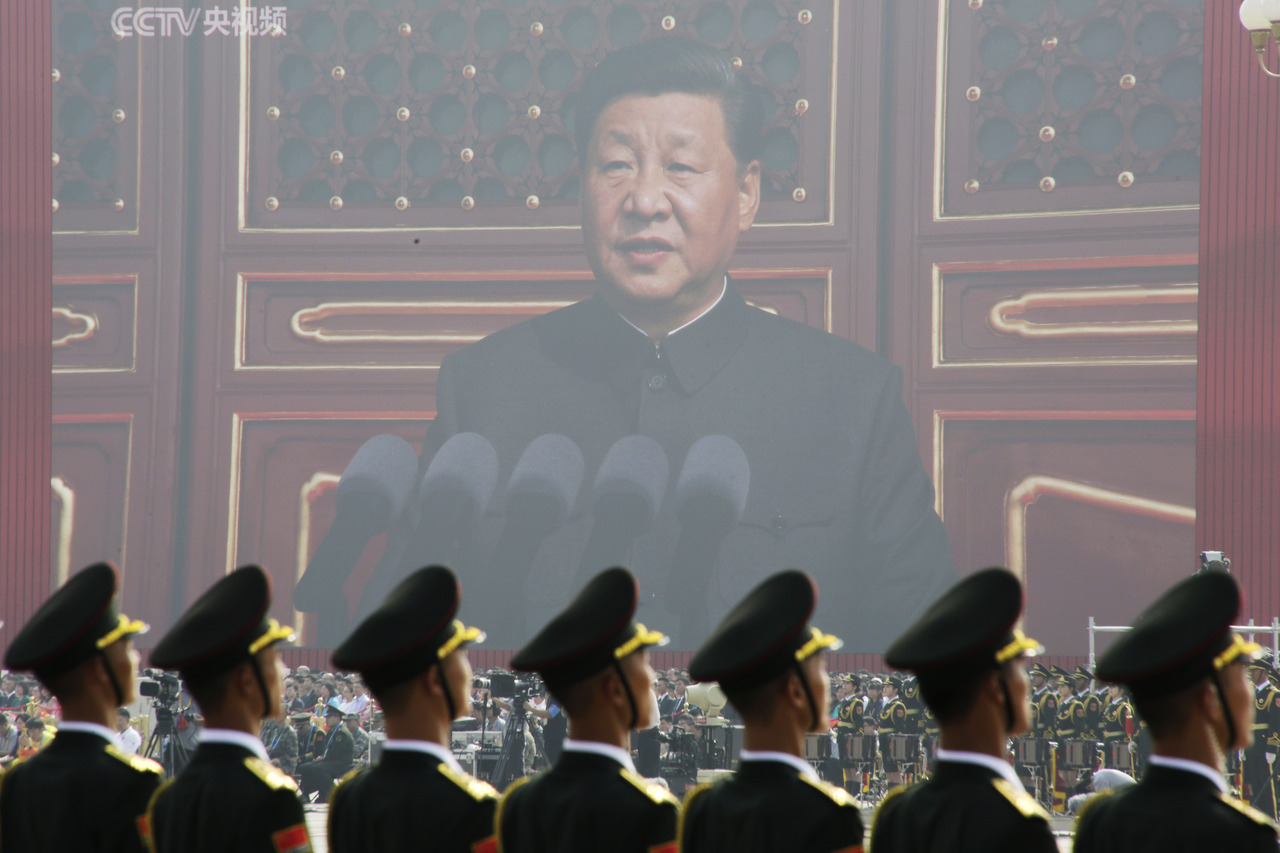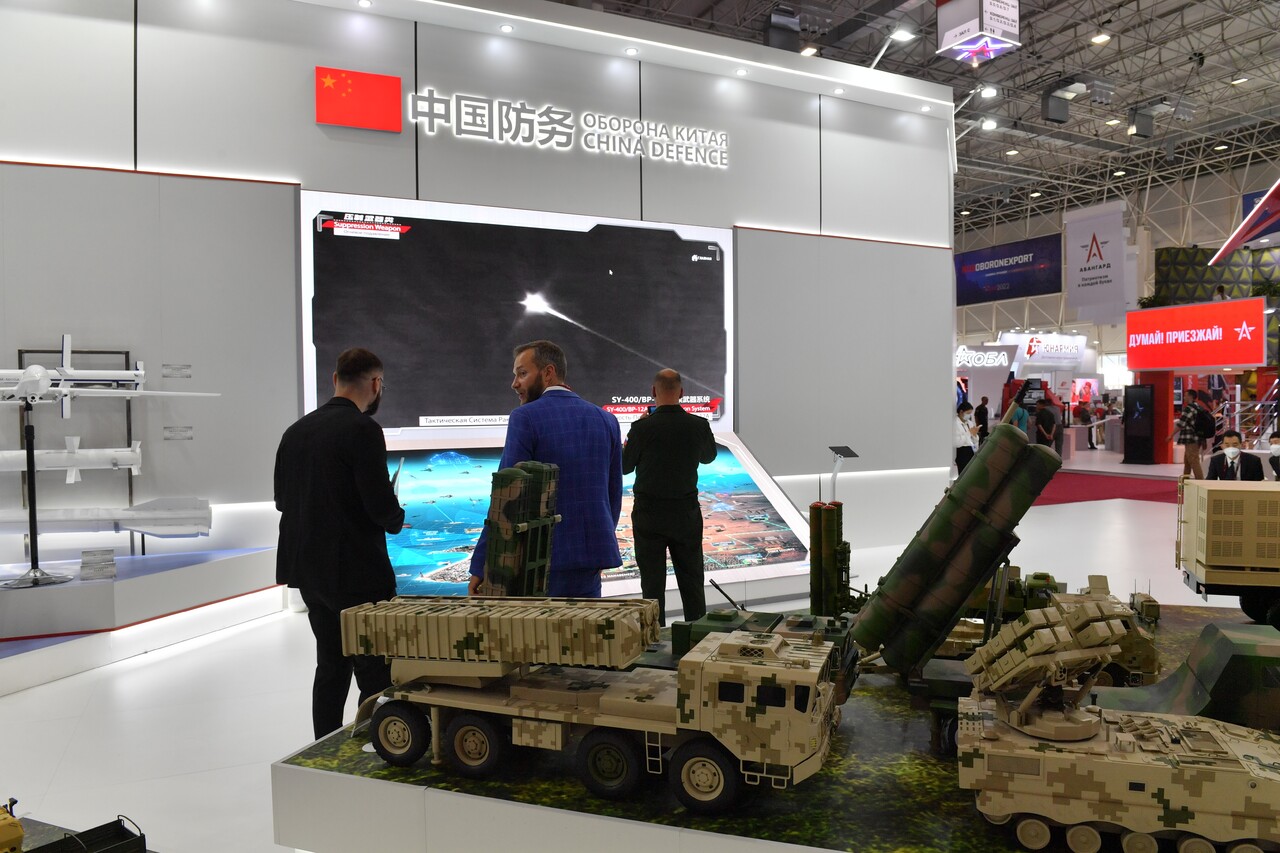China Developing Its Armed Forces through International Cooperation
International cooperation is beginning to play a more serious role in the reform of China’s armed forces and is intended to compete more effectively with the U.S., although China has also resumed military dialogue with that country. The most important partner for China is Russia, with which, among other things, it conducts regular exercises, including in the Pacific. Imports of components and technologies, including from the EU, also play an important role in developing China’s military capabilities. From the EU’s perspective, it is important to increase oversight of cooperation between EU research centres and Chinese partners, and of exports from EU countries to China of armaments and dual-use products.
 Iranian Army Office / Zuma Press / Forum
Iranian Army Office / Zuma Press / Forum
China’s only formal military ally has been North Korea since 1961. China officially rejects the possibility of additional alliances, considering them to be a destabilising factor in the international situation and limiting freedom of action in foreign policy. They cite, for example, NATO activity as a negative example. However, this does not mean abandoning military cooperation with other countries. The goals indicated by the Chinese Ministry of Defence for 2024 include the development of the army’s capabilities through exercises with foreign partners. Cooperation is both bilateral and multilateral, for example within the framework of the Shanghai Cooperation Organisation.
China’s Military Activity
China’s military diplomacy in 2023 returned to its regular pre-pandemic dimension, reinforcing political messages such as the promotion of the Global Security Initiative. The main forum for the realisation of these goals within the framework of military diplomacy was the 10th Xiangshan Forum, held in November 2023 in Beijing where meetings took place between the deputy chairmen of the Central Military Commission and the defence ministers of Belarus, Nigeria, among others. Last year, meetings were held in the format of defence ministers (or chiefs of staff) with a dozen or so guests from countries of the Global South with which China is particularly developing political cooperation, including Congo and Bangladesh.
China’s contacts with Russia are the most intense. Since 2017, the two countries have been developing plans for armed forces cooperation, reinforcing their message of rivalry with the U.S. and NATO. Last December, the 22nd round of Sino-Russian strategic consultations took place in Beijing. Interactions with the U.S. are limited in nature. The bilateral dialogue on military issues was suspended by the Chinese in 2022. It was resumed in January this year as a result of arrangements at the Xi-Biden meeting in California last November. Among other things, consultations took place between the U.S. Department of Defence and the Chinese Ministry of Defence. U.S. contacts are mainly calculated to prevent accidental escalation, for example in the South China Sea or the Taiwan Strait. Among Western countries, a delegation of the Chinese Defence Ministry has also visited Germany, Hungary, and the European Commission and NATO headquarters in Brussels (February 2023).
The development of China’s military cooperation with partners is expressed through military exercises. The choice of the type of armed forces, the scope of the exercises and their location is driven by China’s strategic objectives. Hence, for example, the interaction with Russia in close proximity to Japan—the navies of both countries exercised together in October 2022 near the Aleutian Islands, in July 2023 in the Sea of Japan, and in 2017 they organised manoeuvres in the Baltic Sea. Trilateral exercises are also being organised with other countries, including South Africa (February 2023) and Iran (March and December 2023).
China is also analysing Russian aggression in Ukraine, including the command and equipment of soldiers. Cooperation with Russia may also include the organisation of hybrid or sabotage operations in Europe, although there is no public confirmation of such activities. In October 2023, the Finnish authorities reported that, in their assessment, damage to the Balticonnector pipeline in the Baltic Sea was most likely caused by a Chinese container ship (owned by a Russian company). Military exercises and training are also part of China’s development of relations with Central Asian countries, Mongolia, Cambodia, and Laos. China also provides several thousand places per year at military academies (above all at the National Defence Academy) for soldiers from more than 90 countries, including Uganda and Kenya.
Arms Trade
An important form of China’s activity is the export and import of arms, components for their production, and dual-use items. According to data from the Stockholm International Peace Research Institute (SIPRI), over the past 10 years (2013-2022) China’s share of arms exports has declined by about 1% to 5.2%, with Pakistan, Bangladesh, and Serbia being the most important recipients. In the 2018-2022 period, China imported the most arms from Russia (83%), France (8%), and Ukraine (5%). Then, however, Russian arms exports to China more than halved, with China’s share of Russian foreign sales averaging 23% per year. This is mainly due to China gaining its own capabilities to produce advanced equipment, also by copying Russian products. According to SIPRI, Russian deliveries to China in 2022 included radars and MI-17 transport helicopters, among others. The two countries are also jointly developing military technologies, such as anti-missile systems.
At the same time, shipments to Russia of Chinese dual-purpose products—drones or electrical equipment, which are being used in the war in Ukraine—are increasing. There are unconfirmed reports of Chinese small arms and ammunition sales to Russia, although these are likely to be limited in scope, linked to Chinese concerns about EU and U.S. sanctions. China is also an important arms supplier to Pakistan, Egypt, and Saudi Arabia, among others.
China’s arms industry cannot do without foreign components and technologies. These are mainly sourced from Western countries either through company acquisitions, research cooperation, or industrial espionage. Due to incomplete data, it is difficult to assess the scale of the practice, but the sheer numbers of hacking attacks on companies in the U.S. puts the loss of intellectual property at an estimated $100 billion. For several years, access to technology has been hampered by, among other things, export restrictions imposed by the U.S. administration (already covering more than 700 Chinese companies). Central to the development of China’s armed forces and technology acquisition is the concept of so-called civil-military fusion. It essentially is the use of commercial products for military purposes, including those resulting from the cooperation of scientific centres and technology companies with Chinese entities. This cooperation applies not only to Western countries but also, for example, to Iran.
The nature of China’s cooperation with some Western companies is questionable. In a 1989 declaration, the European Council recognised that the Member States would stop arms trade with China. However, it did not define the scope of the restrictions, which resulted in different interpretations. Therefore, some governments in 2022 were pursuing arms contracts concluded with China back in the 1980s, that is, during the pre-embargo period. This includes French AS 365 helicopters or German diesel engines. EU countries also sell dual-use products, small arms, chemical components, or parts for missile systems to China. In 2021, China was the second-largest buyer of such products from the Union in terms of value (14% share, after the U.S.). Similar approvals (for speedboats, water cannons, or radar systems) were also issued for Hong Kong despite EU bans in 2020.
Conclusions and Outlook
International cooperation allows the Chinese armed forces to acquire technology relevant to weapons development or experience from joint exercises—important for China’s objectives in the Pacific or the Middle East. It also supports political objectives through military diplomacy. China’s most important partner is Russia and it sees cooperation with the Russians as an opportunity to acquire skills and experience in the context of a possible conflict with the U.S. However, it is not interested in a formal alliance.
Also important for enhancing the capabilities of the Chinese army is trade in military equipment and its components, an area in which Russia is also an important partner, although its importance in this context is decreasing. It is not uncommon for China to obtain military and dual-use products from cooperation with companies and centres implementing innovative projects (e.g., at technical universities) from EU countries. In this context, it is important to verify Chinese research institutions and military universities—possible partners of institutions from EU countries, including Poland. This may lead to the abandonment of cooperation in the event of the participation in joint projects of entities linked to the Chinese armed forces.
In view of the growing threats to the EU from China’s foreign policy, including its support for Russia, it is necessary not only to include additional Chinese companies that support the Russian arms industry in EU sanction packages but also to control more effectively the cooperation of European companies with Chinese ones. In addition to the EC’s proposal in January this year to introduce monitoring of EU foreign investment or supervision of research cooperation between centres with the EU, this could also be done by monitoring compliance with export restrictions to China, for example on machinery or diesel engines. It would also be helpful to strengthen the customs services and administrations of EU countries working in this area.





